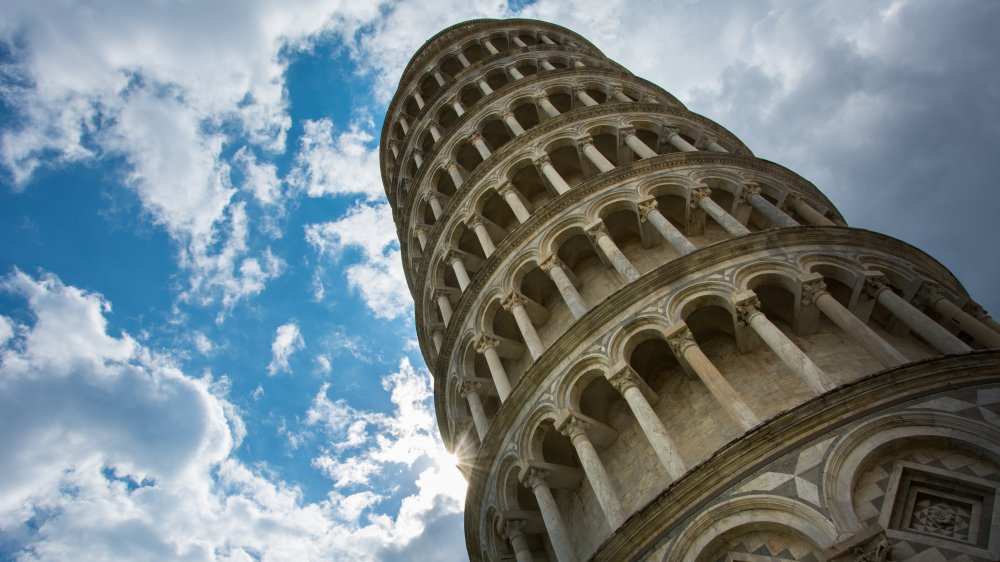These Facts About The Leaning Tower Of Pisa Will Surprise You
Did you know that Italy's Leaning Tower of Pisa isn't actually leaning, but sinking into to the earth at a rate of two millimeters a year? Did you also know that the iconic Italian bell tower is now leaning less than it used to? And that scientists have linked the correction to all those oh-so-clever perspective photos of tourists cleverly helping prop the wonky turret up for the rest of us on Instagram?
Okay, so that last one isn't true. According to Britannica, it was — you guessed it — engineers who saved the classic campanile from tumbling to the paludal, or swampy, soil. The tower's official website notes that the name Pisa comes from a Greek word meaning "marshy land," so maybe it wasn't the best spot on which to build a tower in the first place.
The builders were aware of this fun fact about the tower's location before they started work on the fourth floor, but they kept going. Construction began in 1173, and by 1178 it was obvious that the tower was not going to remain upright. The subsequent stories were built to compensate for the lean — slightly taller on the leaning side of the tower to balance it out and try and keep the floors level — but to no avail. It continued to sink over the next 800 years.
Not the only tower with a tilt
Even with the modern engineering feats that corrected the lean from 5.5 degrees (that's around 15 feet off the perpendicular angle) to less than 4 degrees toward the end of the 20th century, the world-famous belfry's ominous-looking tilt attracts visitors from all over the world to this day. But it isn't the only leaning tower in Pisa. The bell towers at the churches of St. Michele dei Scalzi and St. Nicola are also succumbing to the porous ground.
Neither is it the leaning-est of the world's leaning towers. According to The Logical Indian, the tower at the Ratneshwar temple in Varanasi leans over by a whopping nine degrees, but at just over 13 meters tall, it is significantly shorter than Pisa's. The Leaning Tower of Pisa originally measured up at 60 meters tall, but it now stands at 56.67 meters on its taller side and 55.86 on the short side.
Galileo, that guy who showed us the earth isn't flat a few hundred years ago, was baptized in the adjoining church's baptistry in 1565. You never know what you're going to find when you look into how world-famous structures were actually built.

